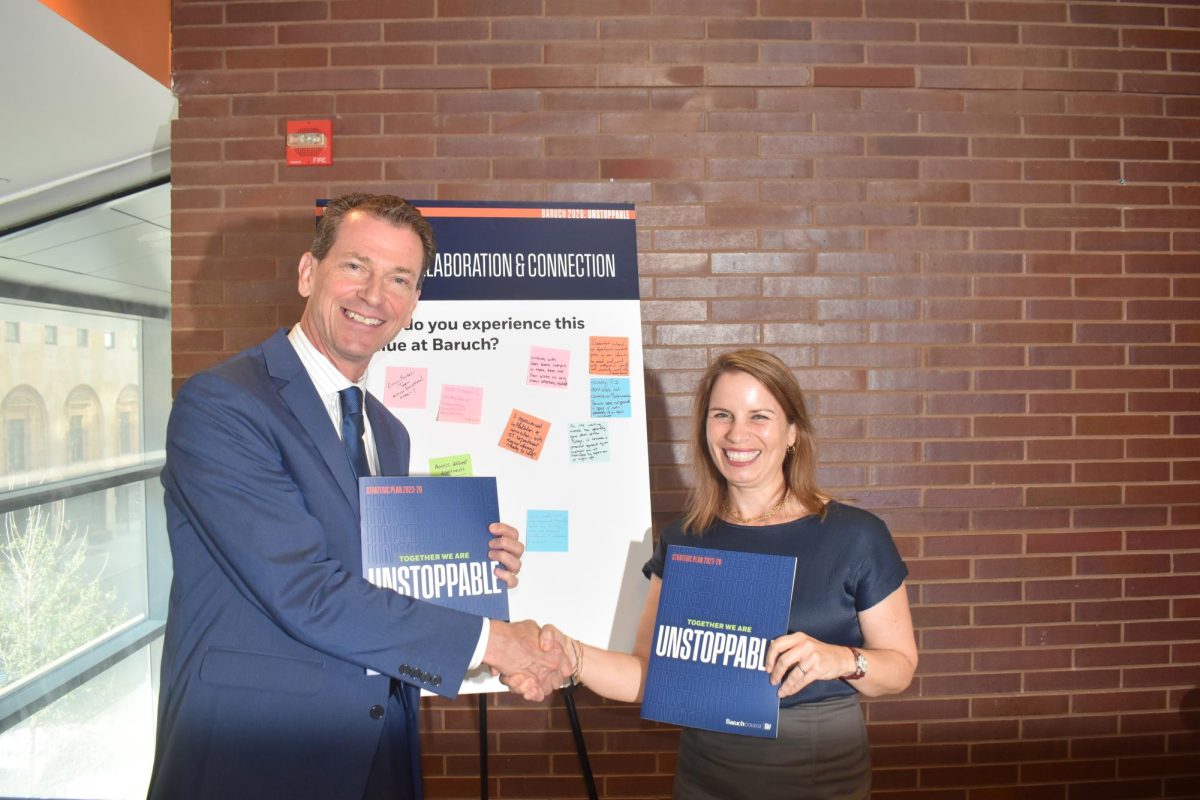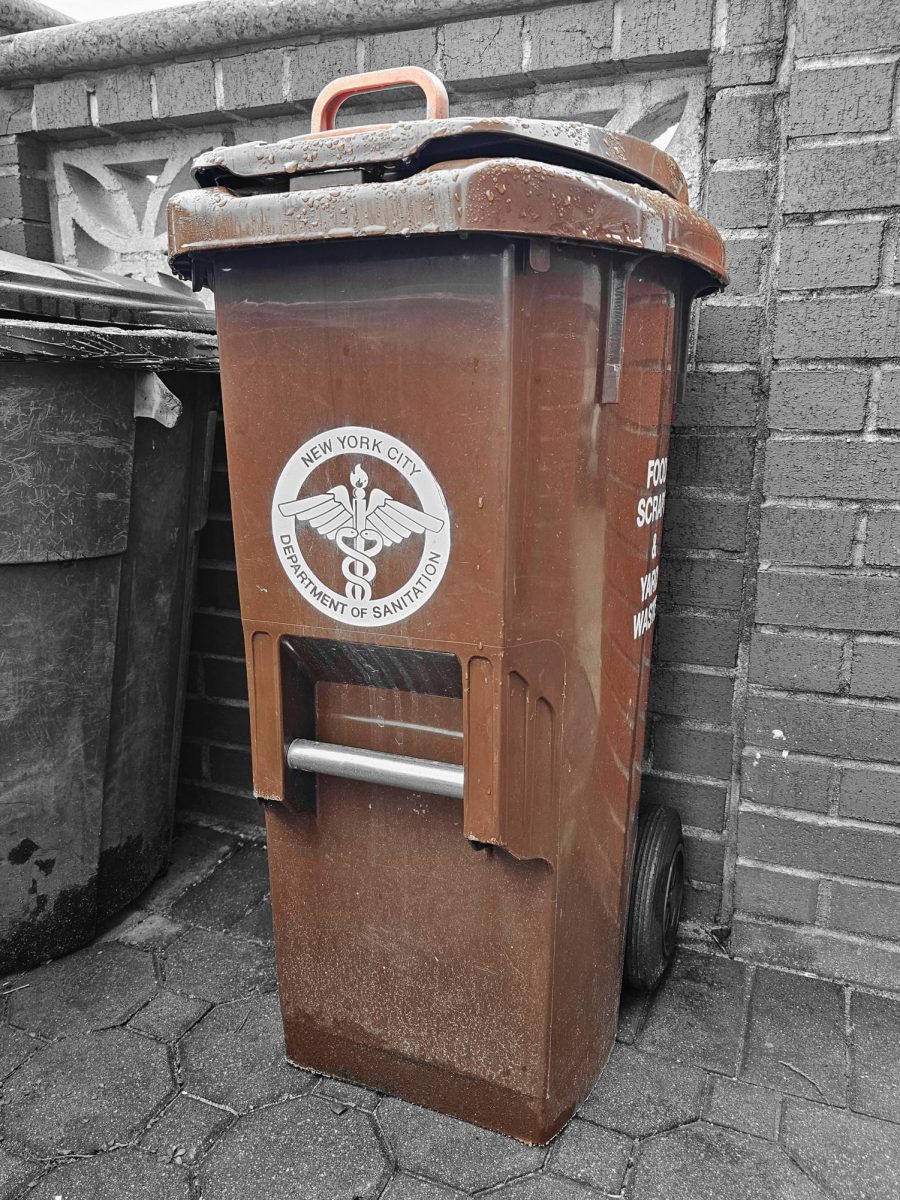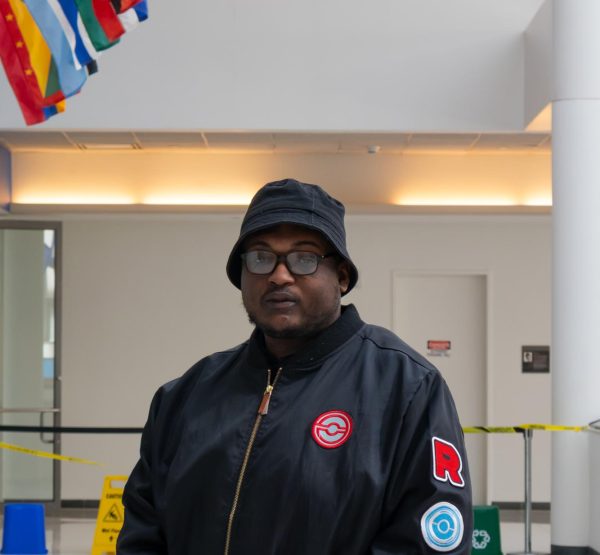Baruch College’s Bearcat Den area was consumed with foot traffic as faculty from different campus departments gathered in the common area to discuss the first of five initiatives highlighted in Baruch’s Strategic Plan.
The event began with an introductory speech from Baruch President S. David Wu to the gathering party, including a few members from Baruch’s Undergraduate Student Government and deans from the Weissman School of Arts & Sciences and Zicklin School of Business.
Wu began his speech by highlighting Baruch’s high rankings in recent Wall Street Journal research.
The four-year CUNY campus was ranked No. 47 in the Wall Street Journal among the best public and private institutions in the United States and in the top ten of best public colleges in the nation.
The first of the five-themed series focused on collaboration and collection, the first key factors in Baruch’s “Unstoppable” strategic plan.
Several guest speakers from many of Baruch’s departments offers, including The STARR Career Development Center, attended the event.
The following individuals were guest speakers at the event: Starr Career Development representative Ellen Stein, Sandy K. and Clemente Diaz.
The speakers described the features of the transfer student program, Bridge to Baruch. This program was made possible through the Petrie Foundation’s $100,000 grant to the STARR Career Center. This program has won two awards for Best Practices from the Career Services Association of CUNY.
These awards include the No.1 “Place for Campus Collaboration” and No. 3 in the “Technology and Digital Outreach to Incoming Transfer Students.”
Bridge to Baruch provides transfer students with career-development activities to enhance their resume writing, interview and networking skills. Additionally, this program assists transfer students with finding internships that fit their career interests by introducing them to job recruiters.
The following speakers were Jessica Lang, Dean of Weissman School of Arts & Sciences and Dean of the Zicklin School of Business, Bruce Weber, who discussed how the academic side of Baruch coincides with its strategic factor on collaboration.
The deans of each school spoke on the new partnership they had developed, where Weber noted how business leaders need to develop their presentation skills to market their data and research efficiently to executives. Skills such as research methods, communicating, writing papers and more are all taught in Weissman’s classes. Zicklin and Weissman plan to be more integrated with one another and improve cross-collaboration between the schools.
“I think this value resonates with people in business schools,” Weber said in his speech. “Deans and faculty know that as valuable as the content that we deliver in our business classes around accounting and marketing and management information systems. It’s not useful to a business leader if they can’t persuade others that their ideas are worth trying and worth moving forward with.”
Weber spoke on the newly created course developments in the Zicklin-Weissman partnership.
Lang added onto Weber’s statements, noting how efforts in cross-collaboration could improve research efforts at Baruch.
“The basic principle behind collaboration is that the sum is greater than the parts,” Dean Lang stated. “And what we’ve seen in collaboration, especially in between our academic units, is that collaboration opens up opportunities that our students really deserve. It opens up opportunities for research for our faculty, and it opens up opportunities professionally for our staff. So, it’s a win for our entire community.”
The next event in the strategic plan series will be in the Bearcat Den and will focus on Baruch’s excellence.








